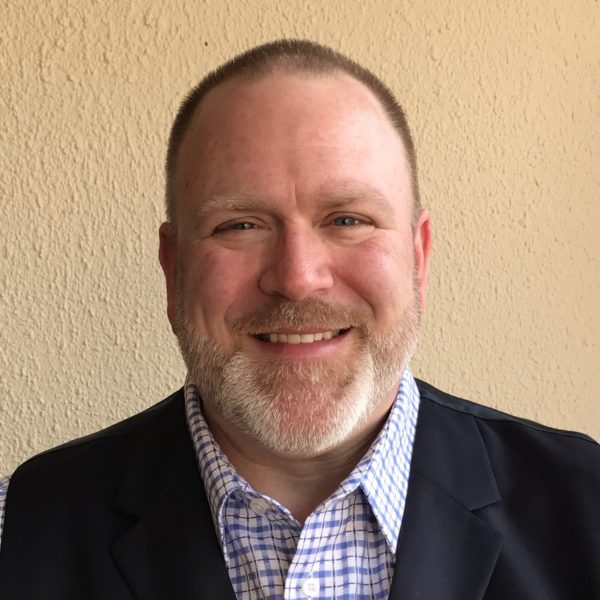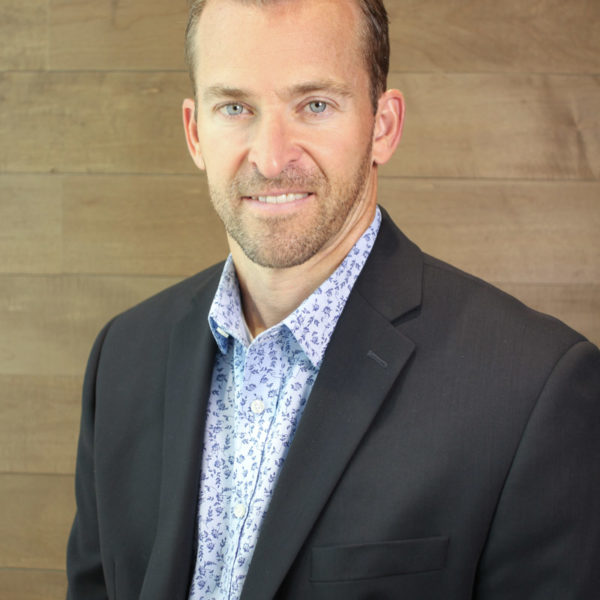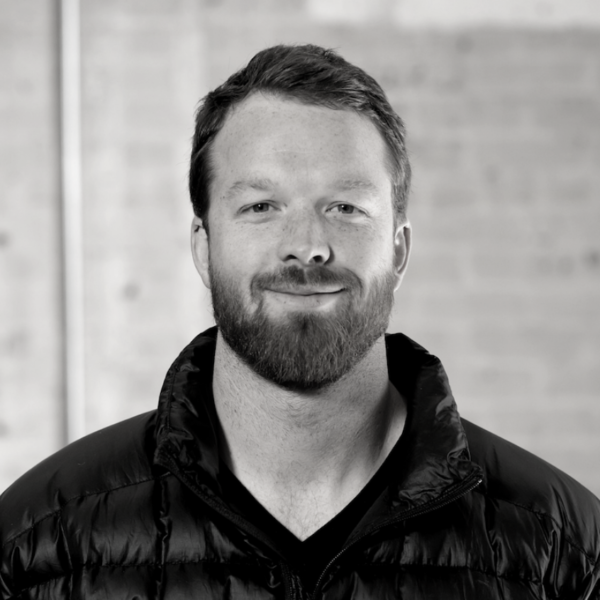Episode 171: Jeff Everton on Effectively Leveraging a Methodology
2.2K Views | 22 Min Read
Shawnna Sumaoang: Hi, and welcome to the Sales Enablement PRO podcast, I’m Shawnna Sumaoang. Sales enablement is a constantly evolving space, and we’re here to help professionals stay up to date on the latest trends and best practices so that they can be more effective in their jobs. Today, I’m excited to have Jeff Everton from Absolute Software join us. Jeff, I would love for you to introduce yourself, your role, and your organization to our audience.
Jeff Everton: Thanks, Shawnna. I appreciate the opportunity. As Shawnna mentioned, I’m Jeff Everton. I’ve been a worldwide sales enablement practitioner for probably the last 30 years, and now most recently with Absolute Software where we’ve recently made an acquisition from another company called NetMotion. It’s really bringing the convergence of these two organizations together to really transform the way we get out and sell and have a consultative conversation with our prospects and our customers.
SS: Well, Jeff, thank you so much for joining us. On that particular note, in your LinkedIn bio one of the things that caught my eye was that you talked about how you guys leverage solution selling methodology to really drive sales productivity and enhance that customer competence of your reps. I’d love for our audience to just learn a little bit more about the methodology that you guys are taking and how it helps better enable sales teams and improve those sales results.
JE: Okay. Well, sales methodologies have been around for a long time. There’s a plethora of them out there that you can pick and choose from. We happened to land on one that I found to be very successful over the years, and it’s truly changing the conversations that most sales professionals have when they’re talking to a prospect or a customer. Often, they’re showing up with a corporate pitch and trying to position something that might resonate with the individual, and then pivoting to that discussion point. The sales methodology that we’ve deployed in the last two companies I’ve been at have been highly successful because it’s a very consultative conversation. It’s all about the business and their needs and their challenges and having the team effectively listen for the key indicators that will lead us to the right solutions at the appropriate point.
We never really start talking about us and what we bring to the table in those conversations. It’s trying to figure out what are they trying to do and why are they looking at it now before we ever talk about how we can help solve that problem. The methodologies that we’ve deployed have really transformed the sales teams in a way to have more cadence and adoption, the managers to coach and reinforce and inspect the things that are going on during that buyer’s journey, and the sales process to make sure that we’re firing on all cylinders and being successful.
SS: I love that. Now, on the point of making sure that methodologies are successful, I think most enablement folks know that you really have to bundle them with sales readiness programs. I mean, those are critical to ensuring that the methodologies get adopted and that they are able to lead to the desired results within the sales team. How have you been able to increase adoption of sales methodology amongst your teams through readiness program?
JE: It starts with the organization. You have to have an organizational alignment for success. It’s not just what readiness or enablement and training is doing to move the needle and get the smile sheets from a Kirkpatrick’s level one analysis or level two knowledge and comprehension. We’re talking about a behavioral change and how the teams are approaching the market from inside lens perspective to the outside from a buyer’s viewpoint and perspective. That organizational alignment is critical.
I have to go back, and I have to work with the marketing teams, I have to work with the operations teams, the leadership team on the sales side of the house, the success teams and ensuring that they all understand what the methodology is about and the language internally. That then allows us to go out to the field and start to articulate that value and have that consultative conversation with those prospects and customers.
As a manager then, they have to come in and inspect coach and reinforce what they’re seeing and hearing and observing to help that individual become more of an effective player. It’s kind of like moving them from being B players that were just recently hired into the organization and drinking from a fire hose and learning all about the different solutions and services to transforming those individuals to being truly hunters out there and being able to effectively listen and understand the needs and problems that their organization is going through, and then, only then, aligning to what solution the methodology brings to the table and how we do it better and different.
SS: I like that approach. Now, what role would you say coaching plays in helping reps effectively leverage a methodology?
JE: Well, traditionally sales leaders have often come in to save the deal, and I don’t think they’ve been effective coaches. I’d say that a good coach is going to spend 30 to 40% of their time helping their teams develop. It’s bringing training into their staff calls, it’s being effective in one-on-ones. We have two methodologies, we use a sales methodology and then we use a qualification methodology, so two different ones that we’re using during an opportunity and in a sales process. What we have the leaders do is set up a cadence, not only with the individual to inspect what they’ve accomplished or through the learning and micro-learning site, but also how they’re applying it, and helping that individual get further along than they might’ve been able to get to on their own. That’s one angle that we’ll take.
The second angle, they might bring it into a staff call and a conversation with a group of people and share best practices and experiences with each other because people like to hear their stories from their peers on the front lines. I find that very successful to get these guys more confidence in being able to go up there and articulate that value and differentiation.
The third angle that any type of a program that you put in place, I’ve learned through the decades of doing this, it’s not just a one and done. It’s not like a transaction when you sell something, you walk away. It’s a relationship. I have relationships across my entire organization and I’m constantly checking in with these folks. The same thing for the field and managers and coaching, they have relationships with their sellers.
To be effective, we put in programs and a cadence that typically takes a program several quarters beyond the initial implementation of a methodology for example. The first quarter might be what we call more of a fast start 13 weeks where we’re going to go through rigor, manager coaching one-on-one, team reviews. Maybe there’s some type of up gamification activities and contests that we do, contests work extremely well. People are motivated by money, and we certainly liked to give them prizes and recognize what they can accomplish. Those are the things that we typically do.
From a manager’s perspective, I have to help the managers get to that place and feel confident and are comfortable in being able to lead. Sometimes when they’re not subject matter experts, let’s say on a methodology, it really takes me taking time and backing up and rewinding and really understanding what it is from a psychological perspective how these individuals are motivated, how you get down and have a conversation with the individuals, how do you make sure that they’re going through the learning? If they aren’t going through the foundational pieces, it’s going to be hard to apply that change of behavior in the street and inspect and reinforce that. I’ve always taught them a simple rule. What are two things that the rep did extremely well and one or two things that they could do differently and improve upon?
SS: I really liked that role. I think that’s a great way to approach coaching. Now, you alluded to this a bit earlier, but obviously in the last year to 18 months or so I think a lot of practitioners have had to adapt their methods to a virtual or remote environment. How can a sales methodology help reps adapt and improve performance in the midst of all of the transitions that we’ve been going through in the past 18 months or so?
JE: That’s a hard one because we’re dealing more with video conferencing calls, we’re having to more effectively listen than we ever had to before. It’s also learning the different needs, wants, and desires of different individuals that you’re talking to. For example, if I’m used to talking with folks in the IT organization, and now I need to talk to people in the security organization, it’s a different language. The methodology is still very applicable. You have to prepare for any conversation that you’re going to have. Proper preparation and due diligence about understanding the business and the individuals that you’re speaking to as well as their industry are critical and paramount.
I always use this analogy of where a trial attorney wouldn’t go into the courtroom and ask a series of questions that they didn’t know the answers to. The same thing you want your reps to be able to do, the exact same thing. Coaching and reinforcing helps the reps build that confidence. The enablement, the virtual programs that I put in over the years, I use a crawl, walk, run, and I want these guys to discover things and apply that and synthesize it in a way. That gets them very comfortable through use case scenarios and role-plays. There’s a multitude of things I do from a readiness perspective to help these guys build that competence in their onboarding journey.
As they’re having these conversations on the street or virtually with these prospects and customers, one of the things that we’ve also done with the methodology is do opportunity coaching and reinforcement sessions where we’ll actually group ahead of time prior to a call, discuss who we’re going to speak to, review the pre-call plan. What are the series of questions? What are the anticipated objections that we might get? And be prepared to respond to that. We also have to be prepared to pivot on two or three different points if the first point isn’t resonating and isn’t relevant to that buyer or individual that we’re speaking to.
Finally, we also have to realize that if I’m going in, let’s say talking to a technical buyer, and an economic buyer walks into the room, I have to be audible ready. I have to be able to just my conversation and bring that individual into the conversations and discussions. What’s important to them is different than the individual I’m speaking to. I don’t want to forget about the individual while I’m there. Let’s say if we’re doing a demo with an SC, we want to make sure that we’re balancing the conversation. Again, it’s more of a conversation, not a monologue that’s taking place, we’re giving a pitch per se or talking about our solutions, but what I want to be able to do after that meeting is go back and do the coaching and reinforcement with the individual and ask them, what went well? What did you like? What do you think you did extremely well? What do you want to keep doing, and what would you change? What would you do differently? That opportunity to review becomes a vehicle for us to help reinforce the right attributes and behaviors that we’re expecting the individuals to do on a regular basis. It builds that confidence.
Other things, like I mentioned to you, we’ll do some games and contests on a quarterly basis to get these teams comfortable in front of their peers because if they can’t speak in front of them or our own executive teams, why would I ever put them in front of a customer or prospect? That’s part of the processes that we go through to make sure that they’re comfortable and getting into virtual discussions with the business. Sometimes they don’t get there. I’ll be very honest with you. Sometimes they get the conversation going and they recognize that they’re not talking to the right individuals, but part of a good sales rapport and building out that pre-call plan is being able to get delegated to who you sound like, being able to ask a series of questions that move you beyond the individual that you’re talking to.
I had a vice president one time reach out to me and tell me, he says, Jeff, I’ve got a problem. I said, what’s that? My people are not effectively listening and learning about the business and preparing for their conversations. When they go in and have a meeting, they have one meeting and that’s the only meeting that they get. They never get invited back to continue that journey and build that trust and rapport. I said, hmm, that is a challenge. Hence why the methodologies are so important, that we can coach and reinforce that behavior and what we’re inspecting and looking for, but I’ve got to get those people comfortable and being able to have that conversation.
It’s really critical that we work together as a team. We always use a philosophy of one team, and we win as a team we lose as a team. We always look at that success. We always look at what went well, what could we do better and differently? How do we learn from the differentiation against the competition and doing all of these things, and put that all together?
SS: I love that. Well, Jeff, I have one last question for you, if you don’t mind. I think at the end of the day, metrics are on everyone’s mind, in particular with sales enablement professionals, as they leverage them to demonstrate business impact. What specific metrics do you recommend tracking to understand if a methodology is leading to those enhanced business results that one would be expecting?
JE: For any methodology to be effective, again, I always start with the organizational alignment and understand what exactly success looks like from a business lens and viewpoint. What are the key imperatives that the organization is trying to accomplish? From there, what I’ll look at it and go, okay, if this is what success looks like, what are the goals to achieve that imperative and what’s required to get there?
What it often comes down to is both qualitative and quantitative key performance indicators. I want to look at leading and lagging indicators, I want to be able to effectively measure activities that have an impact on the performance. Let’s say if moving the needle from a leader to accelerating and making club rank velocity of deals, I want to be able to look at the financial KPIs as maybe lagging indicators, I want to look at qualitative KPIs and descriptive measures and options or characteristics that are involved with this and quantitative KPIs where I can measure the results right against the averages, the ratios percentages, and things like that.
What I mean by that is, we started this journey looking at our sales methodology and this is one of the things that any vendor that’s really doing this correctly is going to ask you is, what does success look like from your lens and your viewpoint and what are the business requirements to get there and measuring those key performance indicators? We start to look at things like, how are we accelerating growth? How are we increasing deal size? Are we increasing net new logos? Are we increasing the expansion of our opportunities? How are we dealing with our renewals and the retention of those renewals? Are we effective in converting our pipeline conversion rates? Are we decreasing the sales cycle and increasing time to productivity let’s say from our onboarding programs?
We look at all those factors and put that into view into some type of a dashboard, so that we can say that we’re truly getting out there and differentiating, we’re having more qualitative conversations, we’re calling higher because that’s always something we want to have happen. We don’t want to be stuck in the glass house per se, but we want to get to the economic buyer and decision-makers, or the panel and committee that makes those decisions. Then I want to be able to monitor this and trend this over time to see if there’s a change in behaviors, particularly with individuals. Not only will I look at the metrics from a business perspective and how my programs are measuring success and how we’re accomplishing that success, but I’m also looking at it from the individual performance and productivity and saying, have I been effective improving their time to competency and improving their productivity?
I can give you an example of that. When we were selling in a previous company in the technology security space, we were very quick to be able to drop a box and line it up and find evil and have a compelling event. Pretty easy to sell something like that, it was unique. As the competition came into the field, it became more complex. There were more acquisitions that took place, and it was harder and harder for those teams to be effective. We were stuck in that rut measuring some of these metrics, and particularly the average deal size. Well, we look at a deal size, let’s say roughly $130,000-$150,000 on a deal. Now, that might sound like a lot to some of you out there, that’s a pretty big deal, but it really wasn’t attaching to the biggest problems in an organization that they were facing and truly solving for the bigger issues that were on the table versus just what typical sellers attach to is the first thing they hear and the first problem they want to try to solve.
We try to get our teams to resist that. Through the methodology think about, is there something bigger? Is there someone else that cares about this problem? When we did this right, I was able to go back to the CRO at the end of the year and say, you asked me to track both leading and lagging indicators, we aligned this to our key imperatives of the organization and how we’re being measured and successful as an organization, but I want to bring this to your attention. Not only did we increase the velocity of deals and take deals down from less than eight to 12 months down to roughly six months on a given sales cycle, but we were also calling higher on those deals and oh, by the way, the average size deal went from that 130 to 150 K range to 2.2 million on 24 different deals. When I can show that type of return off an investment of, let’s say a million-dollar investment that we made, in the methodology it pays 50x the return on just 24 deals. That’s how we look at things.
Then, I’m constantly adjusting it from a dashboard perspective. This is today, is it going to be the same tomorrow? The quarterly reviews become very important to making sure that we’re effective and measuring the right things at the right time.
SS: Absolutely. Well, Jeff, thank you so much for taking the time to talk to us. I learned a lot about your approach to sales methodology.
JE: Thank you.
SS: To our audience, thanks for listening. For more insights, tips and expertise from sales enablement leaders, visit salesenablement.pro. If there’s something you’d like to share or a topic you’d like to learn more about, please let us know. We’d love to hear from you.
















